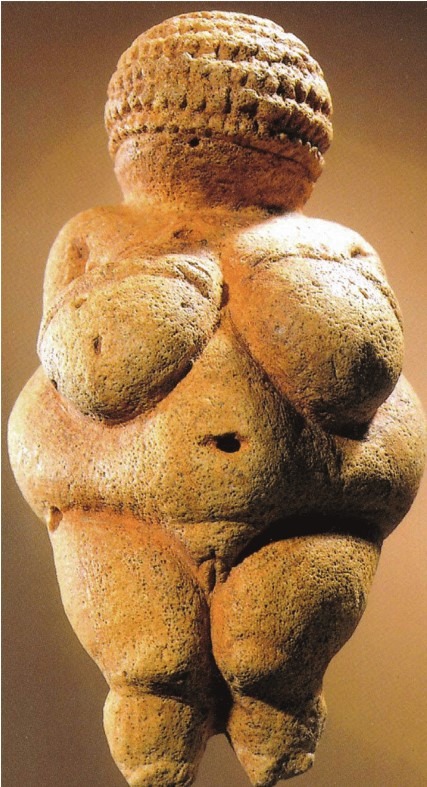
The Willendorf Venus was found during an archaeological dig at… Willendorf, a village by the River Rhine, in 1908. Latest radio carbon dating estimates she was carved around 30,000 years ago.
Replication of the female body is nothing new.
But 30,000 years…
We’re looking at the Paleolithic or Stone Age, named from the greek palaios for old and lithos for stone. Estimated to have begun over 3,000,000 years ago, Paleolithic is the time when humans made survival tools from stone. It was long before we formed communities, domesticated animals and practiced agriculture. During the Paleolithic, we were hunter gatherers using stone axes and flint arrowheads.
Willendorf Venus comes from the final years of this period.
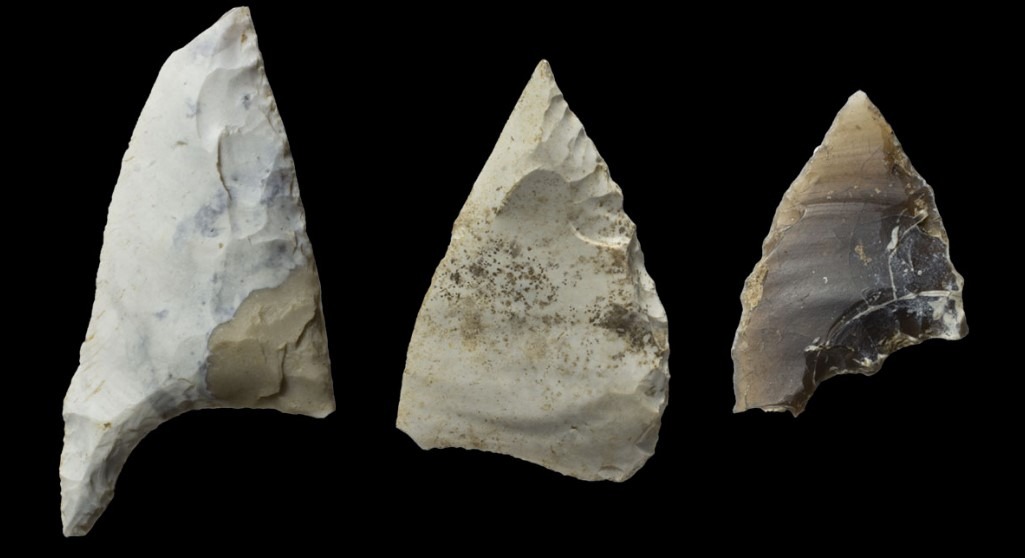
The lady poses more questions than answers.
- Who is she?
- Why was she carved?
- What was her purpose?
Answers can only be theoretical, but other examples of female figurines exist which suggests even more might have been destroyed – or are still waiting to be found.
If I had my time again, I would be an archeologist 🙂
As it is, I’m lucky enough to have seen the Willendorf Venus. The picture below is a little blurred but she’s displayed in the dark and it was an old camera – excuses!
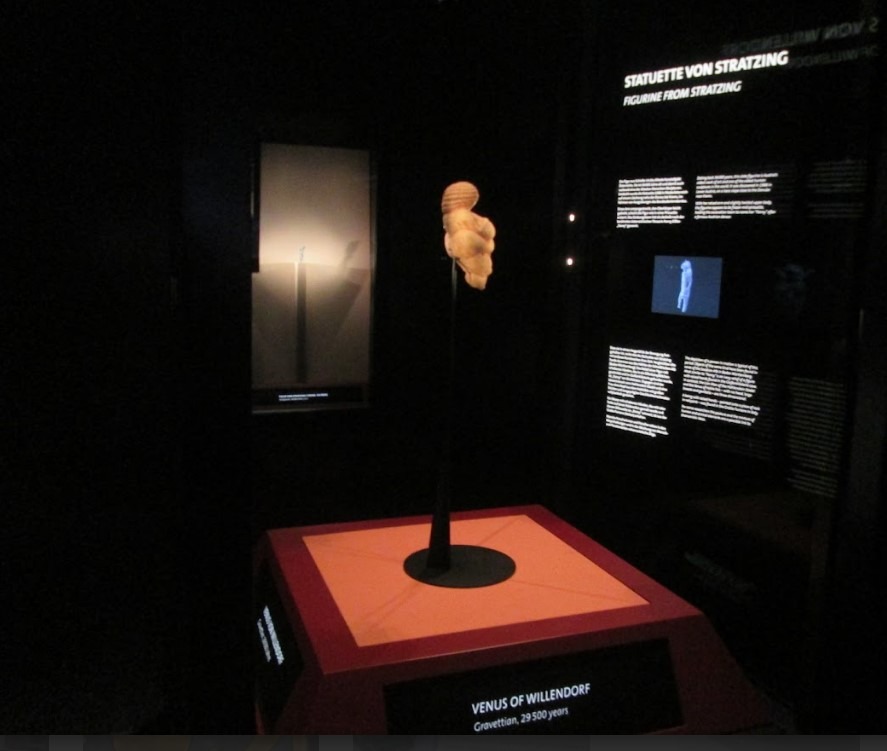
She currently resides in the Museum of Natural History in Vienna and is tiny. Coming in at 4.4 inches (11.1 cm), she’s carved from oolitic limestone which is relatively soft on hardness scales. Traces of red ochre suggest deliberate decoration. Her hair may be braided. Or she could be wearing a hat. Or a head dress which obscures her face. From some angles she appears to be looking downwards.
So small, yet such an enigma.
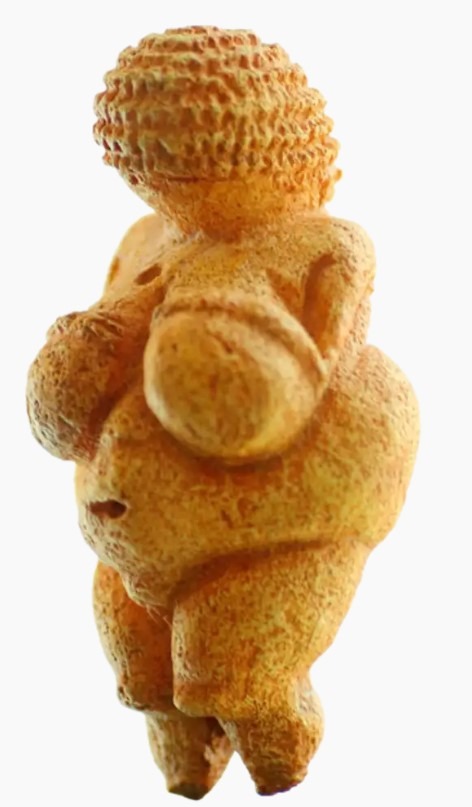
The obvious feature is her large breasts, buttocks and clearly cut vulva;
- does she represent fertility or a mother goddess
- was she used as a talisman or aphrodisiac
- is she stone age porn, an example of the male gaze…?
If you have any suggestions, please leave them in the comments below.
Meanwhile, let’s talk about other finds with similar qualities.
Pre-dating our lady of Willendorf is the Venus of Hohle Fels. This tiny figurine, less than 2 1/2 inches or 6 cm, was carved from woolly mammoth ivory. Found in Hohle Fels Cave in Germany in 2008, she is currently thought to be 35-40,000 years old, making her the oldest representation of the female body ever found – so far. There’s no head, but an ivory loop which appears polished, leading to suggestions she might have been worn.
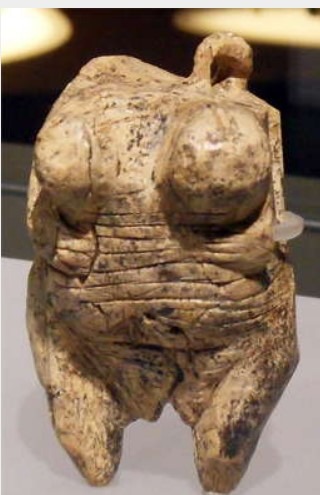
The next figure is known as the Venus of Dolní Věstonice. Dated 31,000–27,000 years ago, she’s a similar age to the Willendorf Venus. Found in a paleolithic site in Moravia, Czech Republic, this statuette is 4.4 in (11.2 cm) high. With pendulous breasts and wide hips, she’s also the earliest example of ceramic clay. Clay is easier to shape than stone or bone, but needs to be fired, which shows the development of a different skill set.
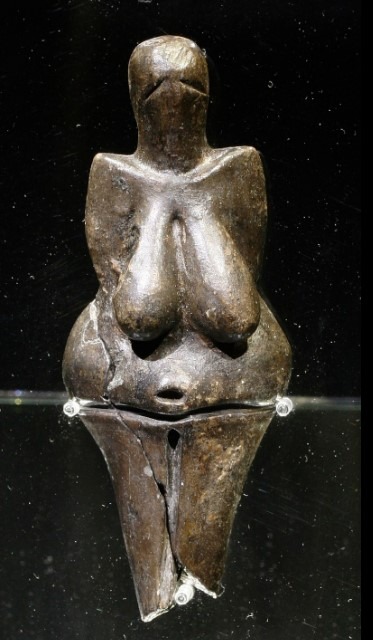
Like Willendorf and Hohle Fels, she lacks feet. It isn’t clear if they’ve broken off or are deliberately missing but it’s been suggested the figures were made to be held or carried rather than displayed. Another theory is they represent self portraits and made by women looking down at themselves.
A more recent example (historically speaking) are pottery statuettes from the Halaf culture in what was Mesopotamia, now southern Turkey and northern Syria. Dated between 5600–5000 BC they continue the theme of prominent thighs and breasts.
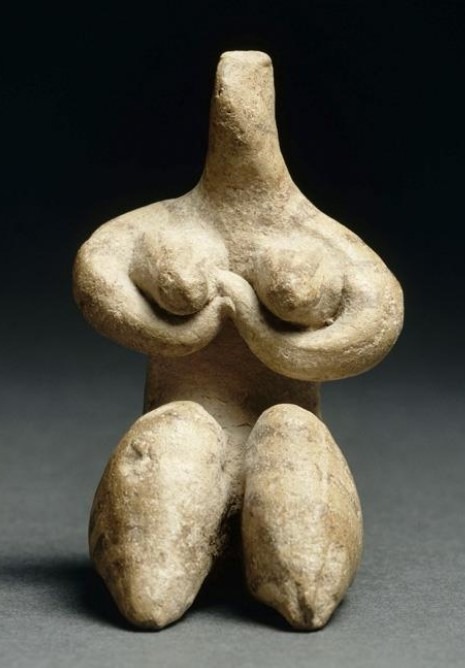
The example above is typical of this time. With a smaller waist, maybe it doesn’t represent fertility, pregnancy or abundance. The arms are emphasising the breasts but either the thighs are exaggerated or she is kneeling.
Lots of potential but no definitive explanations.
Among other figures found from these times and locations, the Seated Woman of Çatalhöyük stands out for her complexity. Çatalhöyük is a Neolithic site in Anatolia, southern Turkey and this one shouts power and status as much as sexuality. Dated around 6,000 BC and also made from fired clay, the arm rests of her throne have been variously described as lionesses, leopards, or panthers.
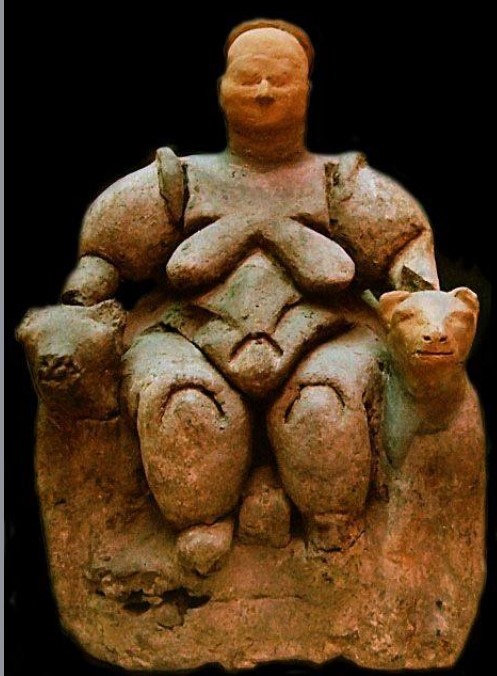
Çatalhöyük is a large excavation site and many statuettes have been found, including the one below. 7 inches (18 cm) tall, made from marble and so far unnamed, she appears to have been ritually buried beneath a platform. This makes me think of the witch bottles post from last month with their protective functions.
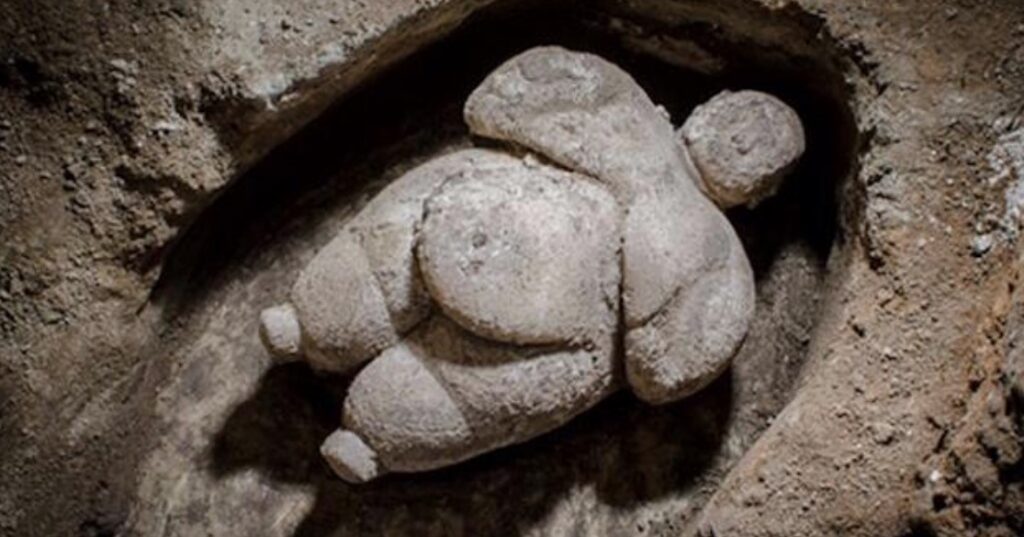
She offers another intriguing glimpse into a different time and culture, one where abundant female flesh appears to be cherished or revered far more than today. Female body size and the changing shape of women’s waistlines is the subject of another post due out later this year.
Lastly in this section, we have the realm of multi-breasted women, based on ancient mother-goddess beliefs in the middle east. Their names include Asherah or Astarte, and it’s thought they became Artemis to the ancient Greeks who in turn was Diana to the Romans.
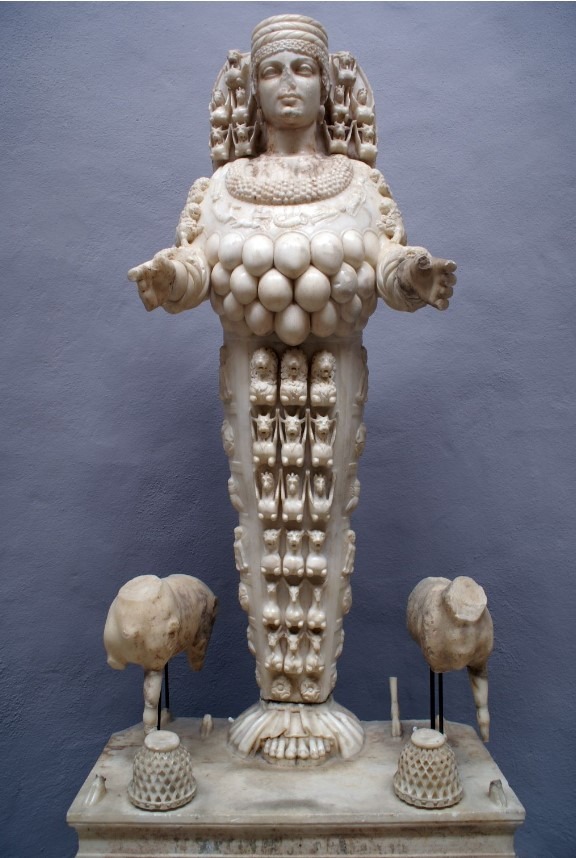
The multiple breasts are designed to focus on fertility. The lady above was found at Ephesus, an area in Turkey where Paul (previously Saul of Tarsus) took the message of Christianity in the latter part of the first century AD.
By the time the church was developing, the mystique of motherhood was already a deep cultural trope. It could not be destroyed so its Maryian form was adopted by the church at the Council of Ephesus in 431 AD. A separate post will talk about the Cult of Mary later this year.
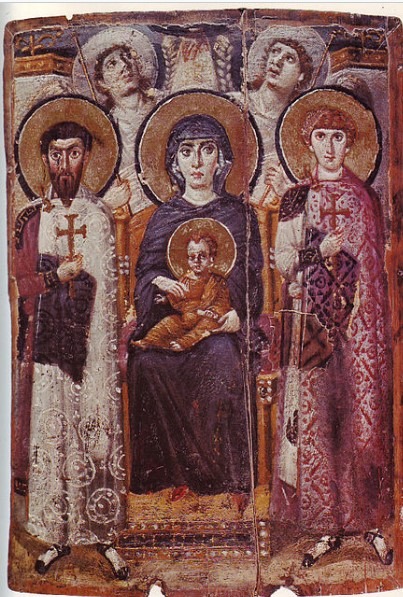
But not all ancient cultures portrayed large women.
Cycladian art dates back over 30,000 years, a similar time to the Venus’s of Dolní Věstonice and Willendorf, and is very different.
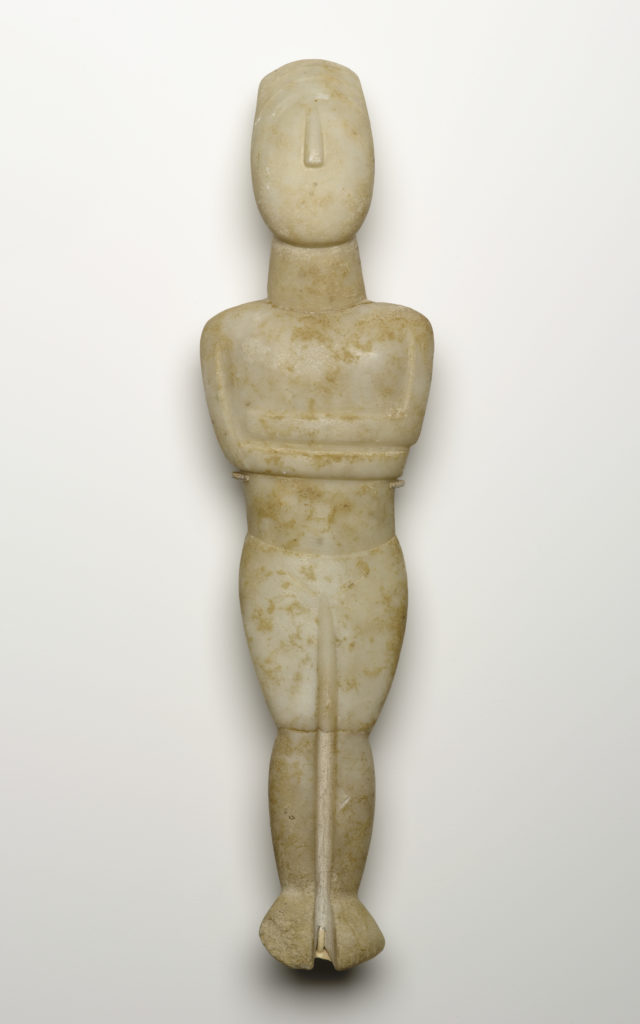
Sometimes called Plank Women, the majority of these finds are thin and flat. While some have breasts and clearly defined vulvas, many don’t. Other figurines from this area look more like cellos than female bodies. Again, there’ll be another post focusing on these Cycladian women from the Agean Sea islands, where such a different visual approach was developed in the Late Neolithic and Early Bronze Age.
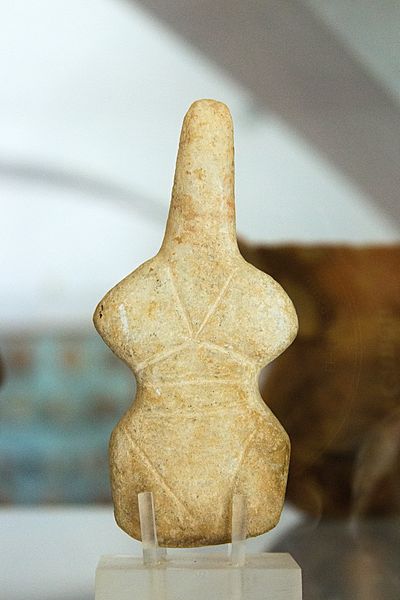
So much to talk about and not enough space!
The female body has a long history of representation. The absence of a male equivalent suggests gender polarity played a signficant role in cultural beliefs.
The sexual and/or reproductive capacity of a woman’s body was revered or fetishised. With facial features seeming less important, a generic function appears more important than any individual one. However, the absence of text or other evidential discoveries, means we will never know for sure and, for me, that’s a huge part of the fascination.
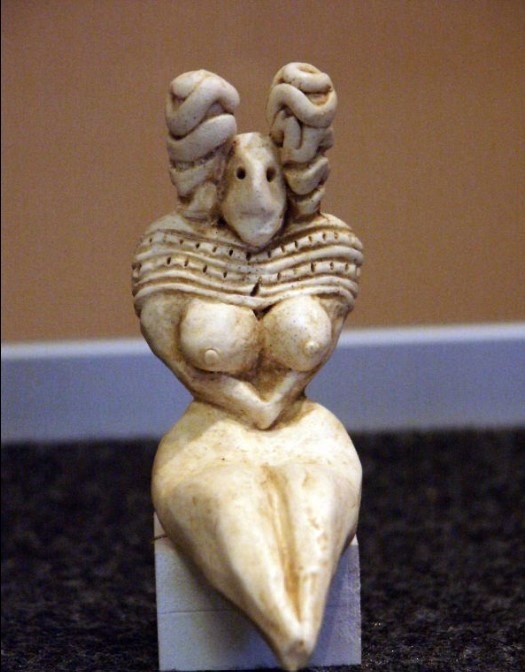
2 thoughts on “Lets talk ancient female statuettes”